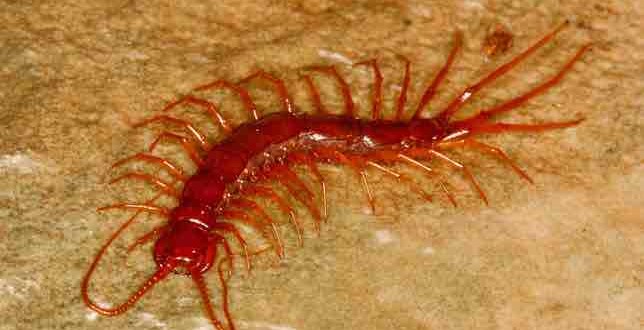How did life first evolve? Creepy, crawly centipedes may hold the answer. researchers have examined this arthropod’s DNA and have been given new insight into how life first developed on our planet.
Centipedes are members of the arthropods, a group with numerous species including insects, spiders and other animals. Until now, the only class of arthropods not represented by a sequenced genome was the myriapods, which include centipedes and millipedes. For this study, the researchers sequenced the genome of the centipede Strigamia maritima, because its primitive features can help us understand more complex arthropods.
According to Prof. Ariel Chipman, senior co-author of the study and project leader at the Hebrew University of Jerusalem’s Alexander Silberman Institute of Life Science, the genetic data reveal how creatures transitioned from their original dwelling-place in the sea to living on land.
“The use of different evolutionary solutions to similar problems shows that myriapods and insects adapted to dry land independently of each other,” said Chipman. “For example, comparing the centipede and insect genomes shows that they independently evolved different solutions to the same problem shared by all land-dwelling creatures — that of living in dry air.”
According to Chipman, the study found that despite being closely related to insects, the centipede lacks the olfactory gene family used by insects to smell the air, and thus developed its own air-sniffing ability by expanding other gene families not present in insects.
In addition, Chipman said, this specific group of centipedes live underground and have lost their eyes, together with almost all vision genes and genes involved in the body’s internal clock. They maintain enhanced sensory capabilities enabling them to recognize their environment and capture prey.
Published in the latest edition of PLoS Biology, the research is a collaborative effort by over 100 scientists from 50 institutions. Thousands of human-hours went into looking at specific genes in the centipede genome, with each researcher looking at a limited set of genes or at specific structural characteristics to address specific questions.
Other leaders of the international research effort include Dr. Stephen Richards, Baylor College of Medicine; Dr. David Ferrier, University of St. Andrews; and Prof. Michael Akam of Cambridge University. The research paper is titled “The First Myriapod Genome Sequence Reveals Conservative Arthropod Gene Content and Genome Organisation in the Centipede Strigamia maritima.”
While early studies of genomics focused on humans, as sequencing equipment and expertise became more readily available, researchers expanded into animals directly relevant to human wellbeing. In the latest research, genomic sequencing has become more broad-based, investigating the workings of the world around us.
Agencies/Canadajournal
 Canada Journal – News of the World Articles and videos to bring you the biggest Canadian news stories from across the country every day
Canada Journal – News of the World Articles and videos to bring you the biggest Canadian news stories from across the country every day



